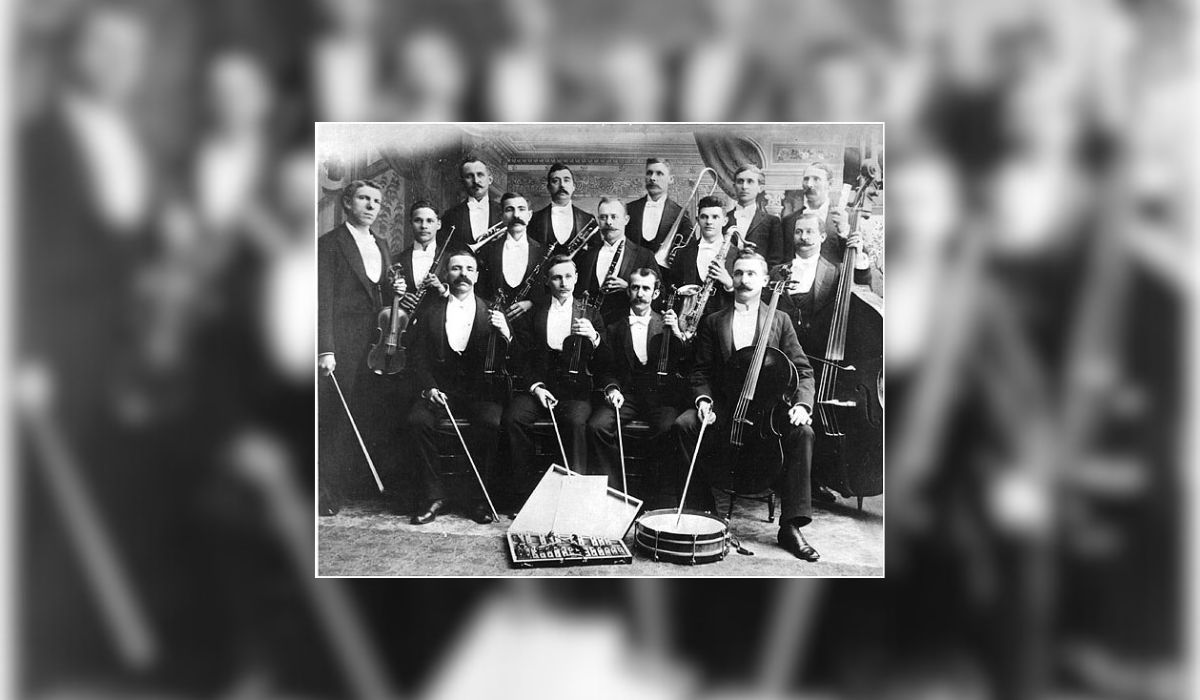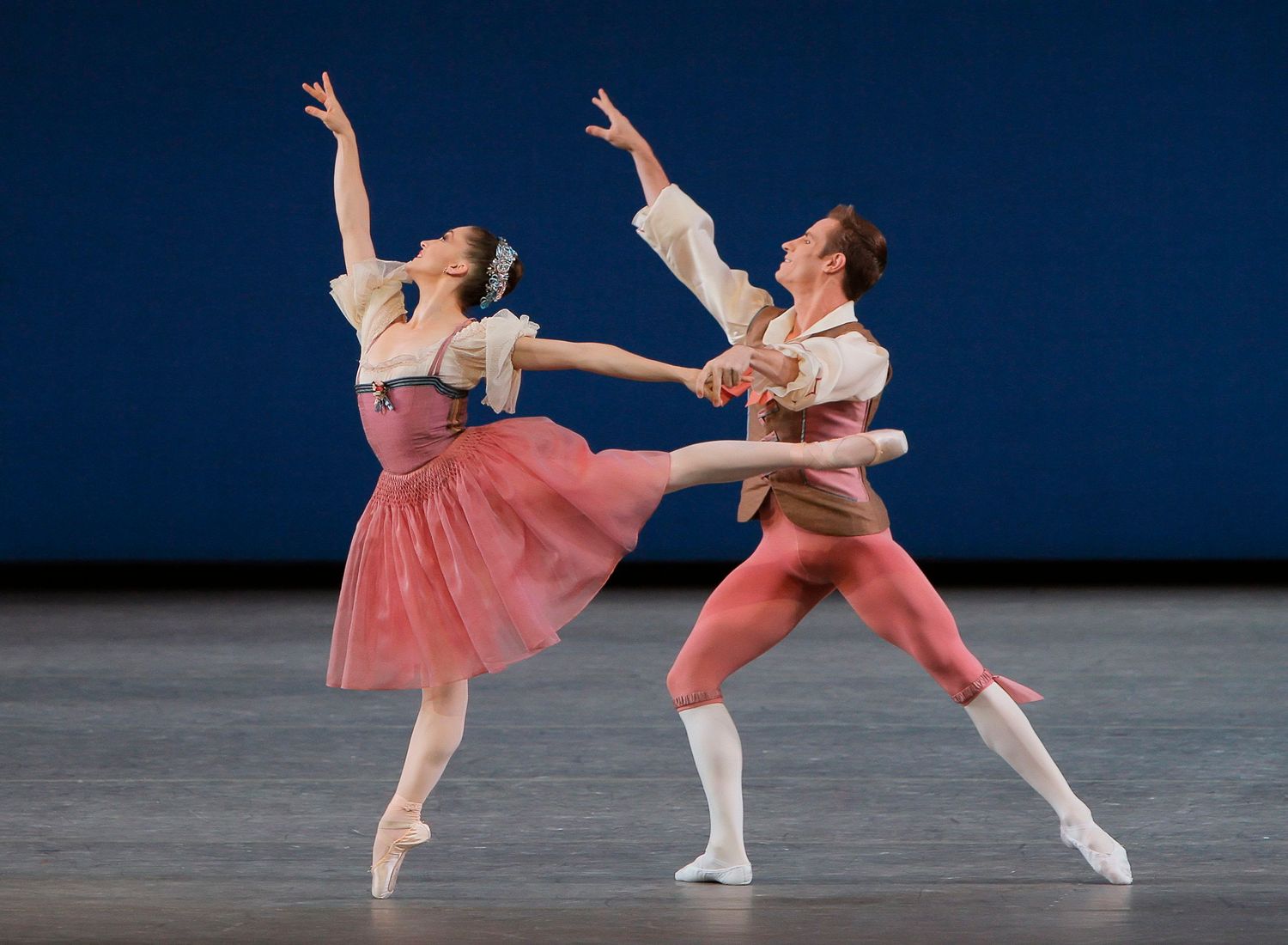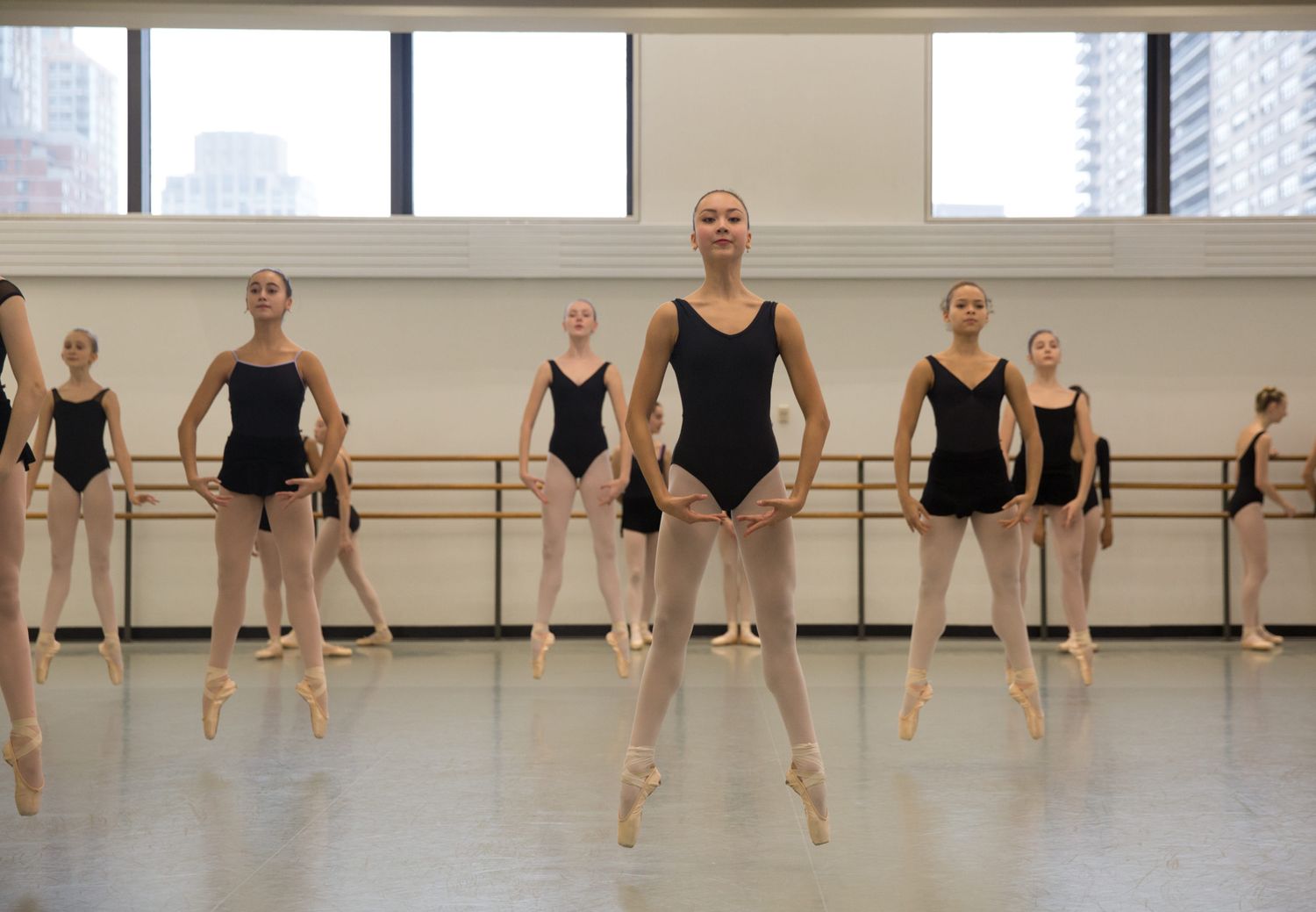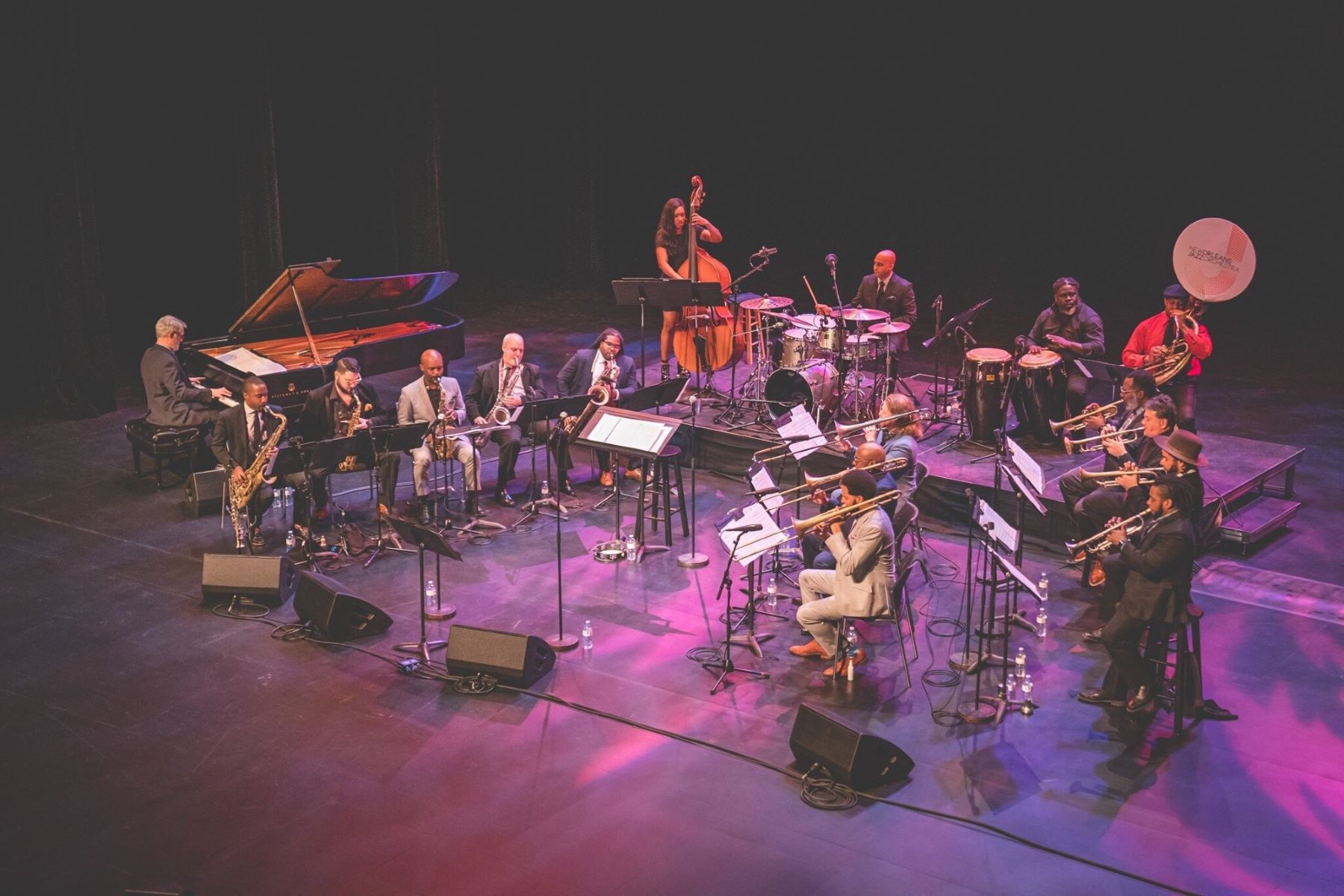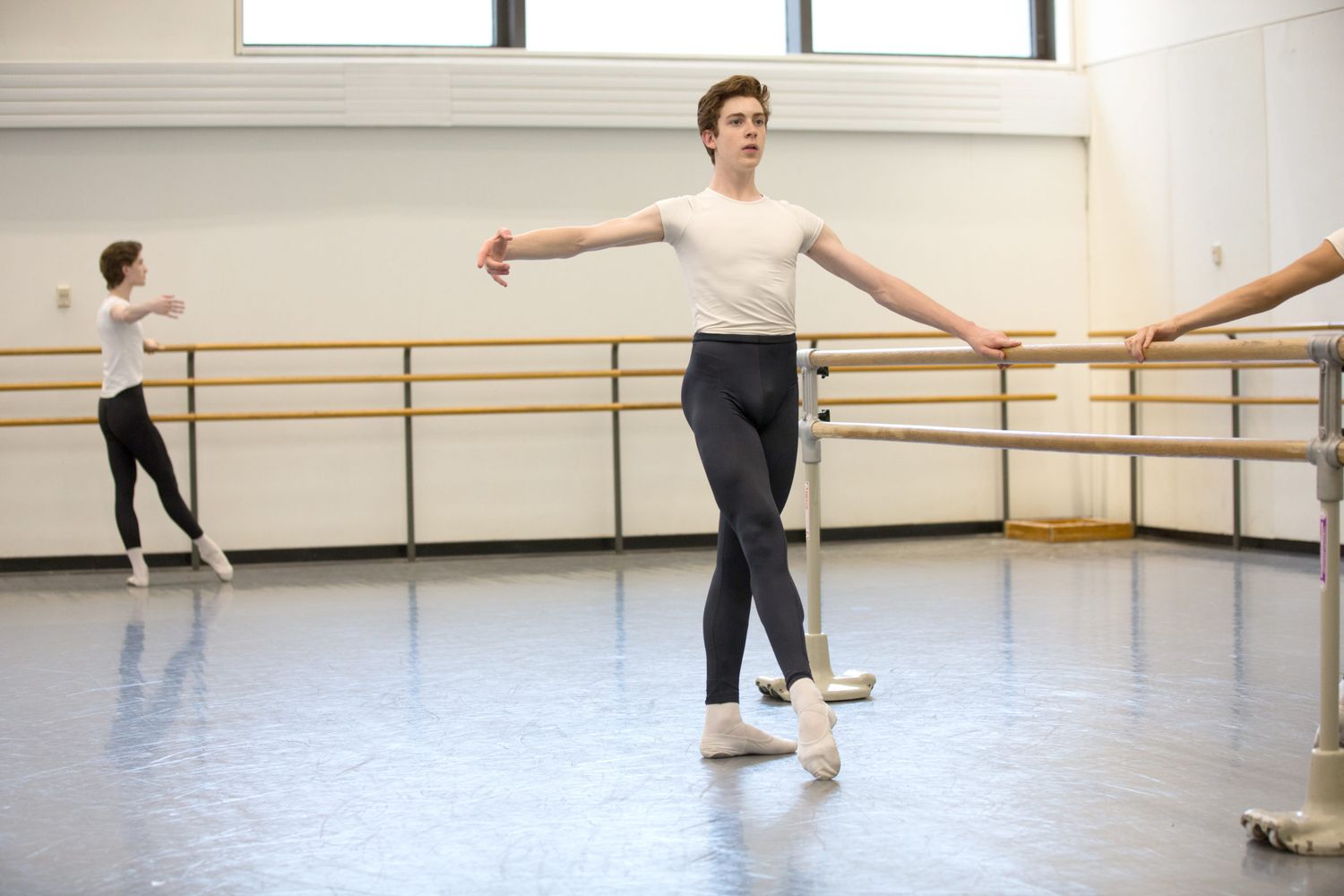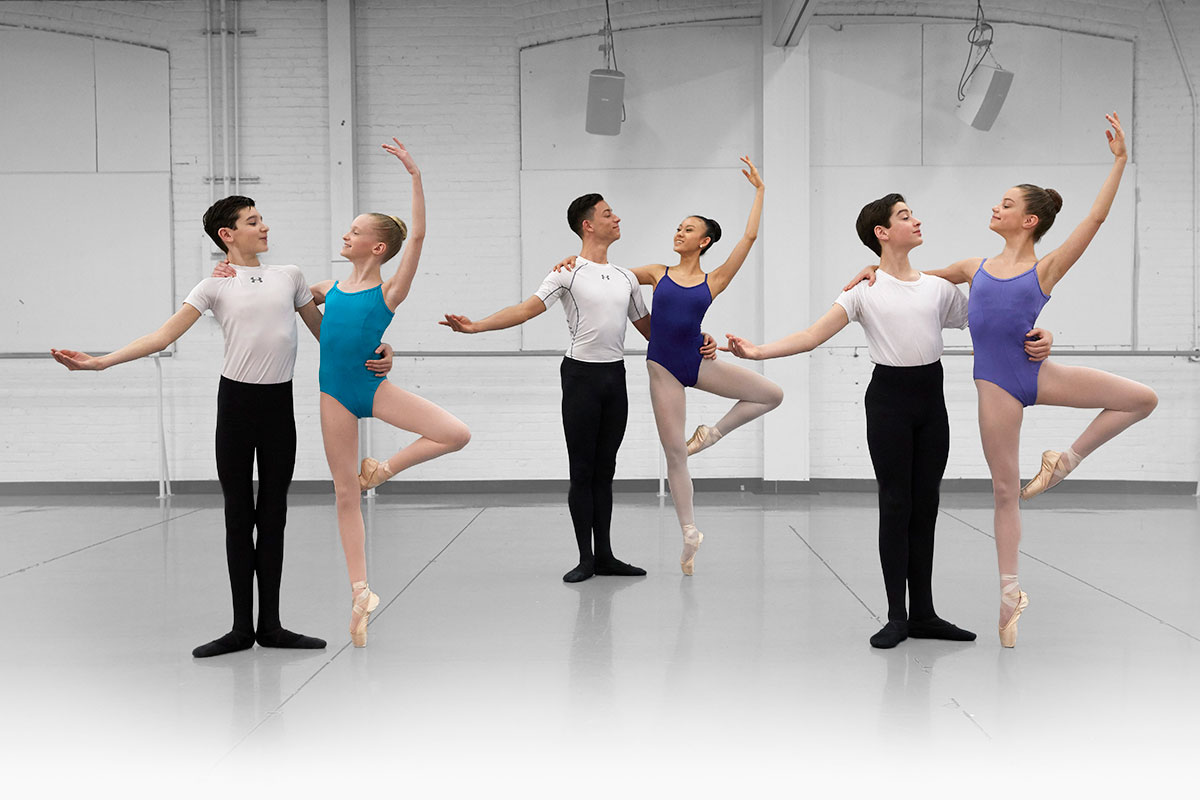Home>Events & Info>Ballet>What Russian Figure Played A Crucial Role In The Development Of Twentieth-Century Ballet?
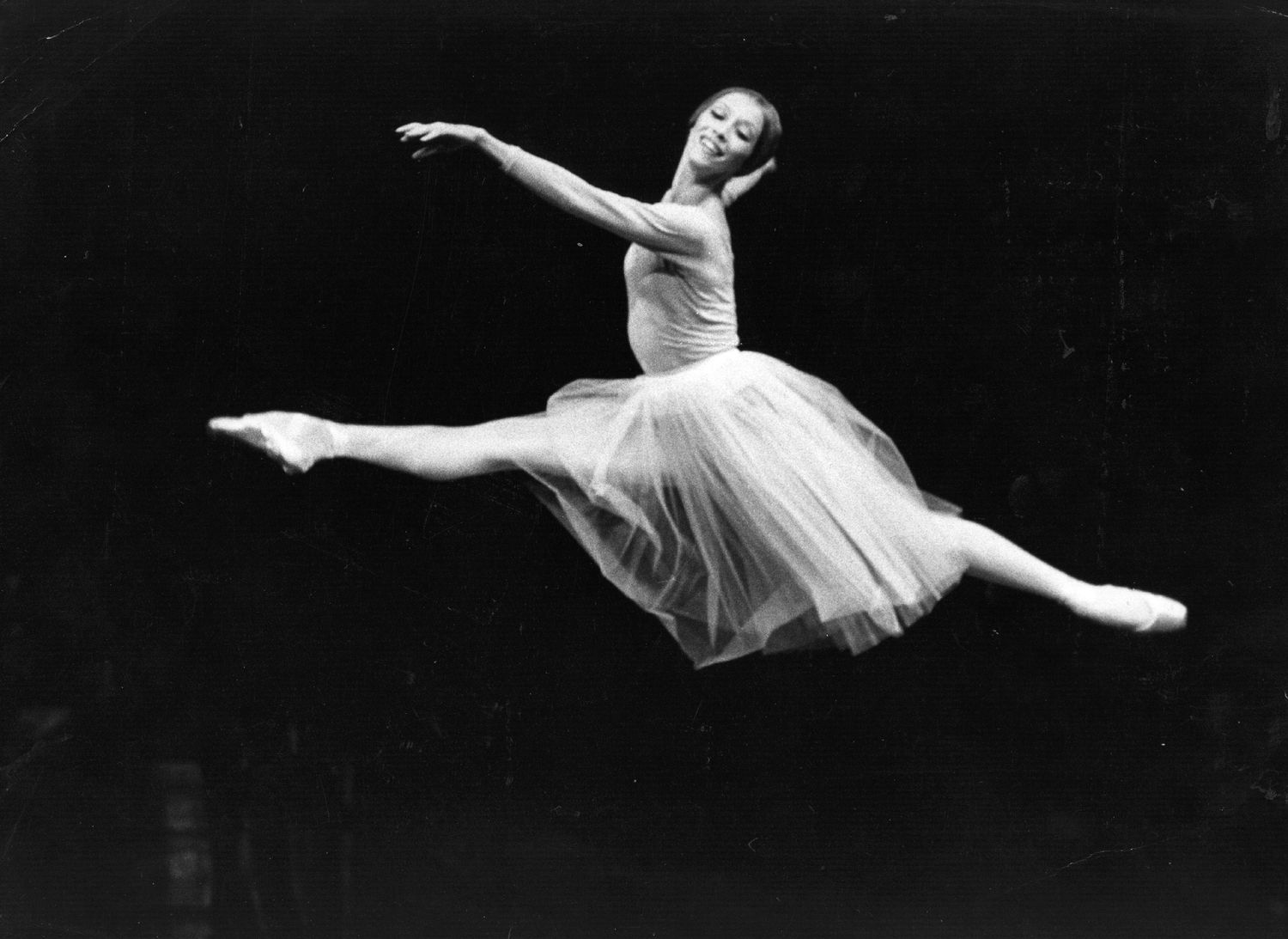

Ballet
What Russian Figure Played A Crucial Role In The Development Of Twentieth-Century Ballet?
Published: January 9, 2024
Discover the pivotal figure in 20th-century ballet development from Russia. Unlock the fascinating history of ballet with our engaging articles and insights.
(Many of the links in this article redirect to a specific reviewed product. Your purchase of these products through affiliate links helps to generate commission for AudioLover.com, at no extra cost. Learn more)
Table of Contents
Introduction
Ballet, the epitome of grace, elegance, and beauty, has a rich and storied history that spans centuries. While ballet originated in the Italian Renaissance courts, it was in Russia that this art form truly flourished and gained worldwide recognition in the twentieth century. Russian ballet became synonymous with innovation, technical perfection, and artistic excellence.
The development of Russian ballet was greatly influenced by the vision and dedication of several key figures. One individual, in particular, stands out as a driving force behind the evolution of ballet in twentieth-century Russia – Sergei Diaghilev.
Diaghilev, a visionary impresario and art patron, played a crucial role in the elevation of ballet from a traditional and conservative art form to a cutting-edge and groundbreaking medium of expression. Through his renowned company, the Ballets Russes, Diaghilev brought together exceptional talent, fostering collaborations between choreographers, dancers, composers, and visual artists.
This article explores the early beginnings of ballet in Russia, delves into the significant influence of Sergei Diaghilev, examines the formation and impact of the Ballets Russes, and investigates the lasting legacy of Russian ballet in the twentieth century.
Early Beginnings of Ballet in Russia
The roots of ballet in Russia can be traced back to the early 18th century during the reign of Peter the Great. Influenced by his travels to Europe, Peter sought to modernize Russia and introduce Western cultural practices, including ballet. He established the first ballet school in St. Petersburg, which would later become the prestigious Imperial Ballet School.
Under the guidance of French and Italian masters, the art of ballet began to take root in Russia. It quickly gained popularity among the Russian nobility, who embraced the courtly dances and theatrical performances. Over time, Russian dancers started to make their mark on the international ballet scene, showcasing their technical prowess and emotive storytelling.
One significant development that fueled the growth of ballet in Russia was the appointment of Marius Petipa as the Ballet Master of the Imperial Ballet in 1869. Petipa revolutionized the art form, creating intricate and demanding choreographic masterpieces that showcased the capabilities of the Russian dancers.
The golden age of Russian ballet arrived in the late 19th century with the premieres of iconic ballets such as “Swan Lake,” “The Sleeping Beauty,” and “The Nutcracker.” These works, choreographed by Petipa and featuring scores composed by Pyotr Ilyich Tchaikovsky, captured the imagination of audiences worldwide and solidified Russia’s reputation as a ballet powerhouse.
During this time, the Russian Imperial Ballet, later renamed the Bolshoi Ballet and the Mariinsky Ballet, became esteemed institutions. These companies nurtured and produced remarkable dancers who captivated audiences with their technical skill, expressive artistry, and the ethereal quality of their performances.
The early beginnings of ballet in Russia served as the foundation for the subsequent advancements and innovations that would shape the future of the art form. The influence of Russian ballet would extend far beyond the borders of the country, inspiring generations of dancers, choreographers, and artists around the world.
The Influence of Sergei Diaghilev
Sergei Diaghilev, a Russian art critic and impresario, was a pivotal figure in the development of ballet in the twentieth century. Born in 1872, Diaghilev had a passion for the arts and a keen eye for talent. He recognized the untapped potential of Russian ballet and set out to revolutionize the art form.
Diaghilev’s influence stemmed from his ability to bring together exceptional creative minds and nurture their talents. He believed in the power of collaboration, and through his visionary leadership, he transformed the world of ballet and expanded its artistic boundaries.
One of Diaghilev’s most significant contributions was the formation of the Ballets Russes in 1909. This avant-garde ballet company, initially based in Paris but with Russian roots, introduced a new era of artistic experimentation and innovation. Diaghilev handpicked dancers, choreographers, composers, and visual artists who pushed the boundaries of tradition and embraced bold and unconventional ideas.
Under Diaghilev’s guidance, the Ballets Russes became a breeding ground for creativity. It served as a platform for talented individuals such as Vaslav Nijinsky, Michel Fokine, Igor Stravinsky, and Pablo Picasso to collaborate and create groundbreaking works of art.
Diaghilev’s vision extended beyond the stage. He commissioned prolific composers to compose original scores for ballets, breaking away from the reliance on pre-existing music. Igor Stravinsky’s iconic scores for ballets such as “The Rite of Spring” and “Petrushka” challenged traditional musical conventions and complemented the bold and daring choreography of the time.
Furthermore, Diaghilev’s innovative approach to set design, costume design, and lighting brought a new visual dimension to ballet. He worked closely with artists like Pablo Picasso, Henri Matisse, and Natalia Goncharova, who created visually stunning and unique designs that enhanced the storytelling and atmosphere of the ballets.
Diaghilev’s ability to identify and nurture exceptional talent propelled the Ballets Russes to international acclaim. He facilitated collaborations between renowned choreographers and dancers, fostering an environment of artistic exploration and growth. The works produced under his direction challenged established norms and expanded the possibilities of ballet as a form of artistic expression.
Although Diaghilev’s life was tragically cut short in 1929, his influence on ballet continues to resonate to this day. His legacy lives on through the countless artists and creators who were inspired by his visionary approach. Sergei Diaghilev remains a pioneer and a driving force behind the evolution of ballet in the twentieth century.
The Formation of the Ballets Russes
The Ballets Russes, formed by Sergei Diaghilev in 1909, marked a turning point in the history of ballet. Diaghilev’s vision was to create a company that would showcase the best of Russian arts and culture to an international audience. This ambitious project not only revolutionized ballet but also had a profound impact on the world of art and culture as a whole.
The formation of the Ballets Russes was a culmination of Diaghilev’s passion for the arts and his desire to push the boundaries of traditional ballet. He assembled a team of extraordinary talents from various disciplines, including ballet, music, visual arts, and set design. This collaboration of artistic geniuses laid the foundation for the company’s success.
The inaugural performance of the Ballets Russes took place in Paris in 1909, captivating audiences with its fresh and innovative approach to ballet. Diaghilev’s bold artistic choices, combined with the exceptional skills of the dancers, propelled the company to the forefront of the ballet world.
One of the key factors that set the Ballets Russes apart was its dedication to showcasing new choreographic works. Diaghilev sought out talented choreographers who were unafraid to experiment and break free from traditional ballet conventions. Choreographers like Michel Fokine, Vaslav Nijinsky, and Leonide Massine created groundbreaking ballets that challenged the norms of storytelling, movement, and expression.
Furthermore, Diaghilev’s commitment to commissioning original music from groundbreaking composers revolutionized ballet scores. He collaborated with renowned composers, such as Igor Stravinsky, Sergei Prokofiev, and Claude Debussy, resulting in iconic scores that pushed the boundaries of musical composition and perfectly complemented the innovative choreography.
The Ballets Russes not only showcased exceptional dancing and music but also emphasized the importance of visual aesthetics. Diaghilev worked closely with artists like Pablo Picasso, Henri Matisse, and Andre Derain for set and costume designs. These collaborations resulted in visually stunning and avant-garde productions that captivated audiences and set new standards for theatrical design.
The impact of the Ballets Russes extended far beyond the stages of Europe. The company embarked on extensive international tours, exposing audiences around the world to the beauty and artistry of Russian ballet. From London and Paris to New York and Australia, the Ballets Russes left an indelible mark on the global dance scene.
The formation of the Ballets Russes marked a watershed moment in ballet history. With Diaghilev at the helm, the company pushed the boundaries of artistic expression, brought together exceptional talents, and introduced a new era of collaboration and innovation. The legacy of the Ballets Russes continues to inspire and influence the world of ballet to this day.
Collaboration with Renowned Choreographers
One of the defining characteristics of the Ballets Russes, under the visionary leadership of Sergei Diaghilev, was its collaboration with renowned choreographers. Diaghilev had a keen eye for talent, and he handpicked choreographers who pushed the boundaries of traditional ballet and brought a fresh perspective to the art form.
Michel Fokine was one of the key choreographers associated with the Ballets Russes. Known for his innovative approach, Fokine sought to break away from the rigid conventions of classical ballet and introduce more expressive and emotive movements. His ballets, such as “Les Sylphides” and “Firebird,” showcased a new style of choreography that incorporated elements of folklore, narrative storytelling, and expressive gestures.
Vaslav Nijinsky, a dancer-turned-choreographer, was another pivotal figure in the Ballets Russes. His choreographic creations, such as “L’Après-midi d’un Faune” and “The Rite of Spring,” shocked and challenged audiences with their experimental movements and unconventional themes. Nijinsky’s bold and daring choreography pushed the boundaries of what was considered acceptable in the ballet world at the time.
Another influential choreographer associated with the Ballets Russes was Leonide Massine. His works, such as “Parade” and “Le Tricorne,” combined elements of classical ballet with aspects of modern dance and folk traditions, creating a unique and dynamic style. Massine’s choreography brought a sense of theatricality and storytelling to the ballet stage, further expanding the possibilities of the art form.
Diaghilev’s collaborations with these choreographers not only resulted in groundbreaking ballets but also fostered an environment of artistic exploration and innovation. The choreographers were given the freedom to experiment and challenge the traditional conventions of ballet, resulting in works that continue to influence and inspire choreographers to this day.
The Ballets Russes also attracted international talent, further enriching its collaborations with renowned choreographers. The company worked with choreographers such as George Balanchine, who later became one of the most celebrated choreographers in the history of ballet. Balanchine’s innovative approach to movement and his commitment to musicality continue to influence generations of dancers and choreographers.
Through his dedication to collaboration, Diaghilev fostered an environment that nurtured artistic creativity and brought together the brightest choreographic minds of the time. These collaborations not only propelled the Ballets Russes to new heights but also pushed the boundaries of ballet as an art form, paving the way for future choreographers to explore new possibilities and express their creativity.
Innovation and Experimentation in Ballet
The Ballets Russes, under the visionary leadership of Sergei Diaghilev, was a breeding ground for innovation and experimentation in the world of ballet. Diaghilev believed in pushing the boundaries of the art form, encouraging choreographers, composers, and visual artists to explore new ideas, challenge traditional norms, and embrace artistic experimentation.
One area of innovation was the choreographic style. Choreographers associated with the Ballets Russes, such as Michel Fokine and Vaslav Nijinsky, sought to break away from the rigid and formulaic nature of classical ballet. They introduced new movements, focused on emotional expression, and incorporated elements of folk dances, mythology, and symbolism in their works. It was a departure from the purely technical displays of virtuosity and brought a new depth and meaning to ballet storytelling.
Another significant innovation was the collaboration between choreographers and composers. Diaghilev commissioned original music from leading composers like Igor Stravinsky, Sergei Prokofiev, and Claude Debussy. These composers created scores that were specifically tailored to the choreography, breaking away from the traditional practice of using pre-existing music. The synergy between choreography and music in these ballets emphasized the importance of unity and artistic vision.
The Ballets Russes also embraced innovation in set and costume design. Diaghilev collaborated with prominent visual artists such as Pablo Picasso, Henri Matisse, and Natalia Goncharova to create visually stunning and avant-garde designs. These designs went beyond the traditional ballet aesthetics, incorporating bold colors, abstract forms, and unconventional materials. The visual elements of the productions complemented the choreography, enhancing the overall experience of the ballets.
Moreover, the Ballets Russes embraced interdisciplinary collaborations, bringing together artists from various disciplines. Painters, composers, writers, and dancers worked side by side, influencing and inspiring each other. This cross-pollination of ideas and perspectives resulted in the creation of innovative and groundbreaking works of art that had a lasting impact on the world of ballet and beyond.
The Ballets Russes also dared to tackle controversial and challenging subjects in their ballets. Vaslav Nijinsky’s choreography for “The Rite of Spring,” with its provocative movements and unconventional storyline, caused a sensation and sparked passionate debates. The Ballets Russes defied expectations by presenting works that were daring, thought-provoking, and unafraid to challenge artistic conventions.
Through their commitment to innovation and experimentation, the Ballets Russes transformed ballet into a vibrant and dynamic art form. Their willingness to take risks and explore new possibilities paved the way for future generations of choreographers, dancers, and artists to push the boundaries of ballet and continue to innovate in their own unique ways.
Legacy of Russian Ballet in the Twentieth Century
The legacy of Russian ballet in the twentieth century is profound and far-reaching. The innovations, artistic collaborations, and groundbreaking works created by the Ballets Russes and other Russian ballet companies continue to influence the world of dance and shape the evolution of the art form.
One of the most significant legacies of Russian ballet is the emphasis on technical excellence and artistry. Russian ballet training, with its rigorous discipline and emphasis on perfecting technique, has been highly influential worldwide. Dancers trained in the Russian tradition are known for their exceptional strength, flexibility, and precision, captivating audiences with their flawless execution.
The impact of Russian ballet can be seen in the proliferation of ballet schools and companies across the globe that incorporate the principles and techniques developed in Russia. The Vaganova method, a key component of Russian ballet training, has become one of the most widely taught ballet methods internationally.
In addition to technique, the legacy of Russian ballet is evident in the repertoire of ballet companies around the world. Iconic ballets such as “Swan Lake,” “The Nutcracker,” and “The Sleeping Beauty,” originally choreographed in Russia, continue to be performed and cherished by audiences worldwide. The storytelling, grandeur, and emotional depth of these ballets have become a cornerstone of the ballet tradition.
The collaboration between choreographers, composers, and visual artists, pioneered by the Ballets Russes, has also left a lasting impact. The concept of the collaborative approach to ballet production has become a standard practice in the dance world, with choreographers and artists from various disciplines working together to create innovative and visually breathtaking performances.
Moreover, the Ballets Russes and Russian ballet companies have inspired generations of dancers, choreographers, and artists to push the boundaries of creativity and expand the possibilities of what ballet can be. Their willingness to experiment, challenge conventions, and explore new ideas has allowed for the continued evolution and growth of the art form.
The legacy of Russian ballet can also be seen in the prominent role of Russian dancers in leading ballet companies worldwide. Many Russian ballet dancers have achieved international acclaim, becoming celebrated stars and ambassadors of the art form. Their technical brilliance, passionate performances, and dedication to their craft continue to inspire and motivate aspiring dancers everywhere.
Overall, the legacy of Russian ballet in the twentieth century is a testament to the enduring power and influence of this art form. Through technical mastery, artistic innovation, and a commitment to collaboration, Russian ballet has left an indelible mark on the world of dance, ensuring its continued relevance and impact for future generations.
Conclusion
Russian ballet has made an indelible mark on the world of dance, with its legacy in the twentieth century leaving an enduring impact. Through the visionary leadership of Sergei Diaghilev and the Ballets Russes, Russian ballet became a beacon of innovation, experimentation, and artistic excellence.
The early beginnings of ballet in Russia laid the foundation for the immense growth and success that would follow. The Imperial Ballet School, the golden age of the Russian Imperial Ballet, and the contributions of Marius Petipa all played crucial roles in shaping Russian ballet’s trajectory.
However, it was through the influence of Sergei Diaghilev and the formation of the Ballets Russes that Russian ballet truly took center stage on the international scene. The collaborations with renowned choreographers, composers, and visual artists brought forth a new era of artistic possibilities.
Innovation and experimentation became the trademarks of Russian ballet during this time. Choreographers like Michel Fokine, Vaslav Nijinsky, and Leonide Massine broke free from traditional conventions, while composers such as Igor Stravinsky revolutionized ballet scores. The Ballets Russes also pushed the boundaries of visual aesthetics with collaborations with visionary artists like Pablo Picasso and Henri Matisse.
The legacy of Russian ballet in the twentieth century is profound. The emphasis on technical excellence, the enchanting repertoire of iconic ballets, and the collaborative approach to ballet production continue to inspire and shape the world of dance. Russian ballet’s influence can be seen in ballet companies and schools around the world, as well as in the achievements of Russian dancers who have risen to prominence on the international stage.
Russian ballet remains a testament to the power of art to transcend cultural boundaries and captivate audiences with its beauty and expression. The legacy of Russian ballet in the twentieth century will continue to inspire generations of ballet enthusiasts, ensuring that this timeless art form remains alive and vibrant for years to come.

